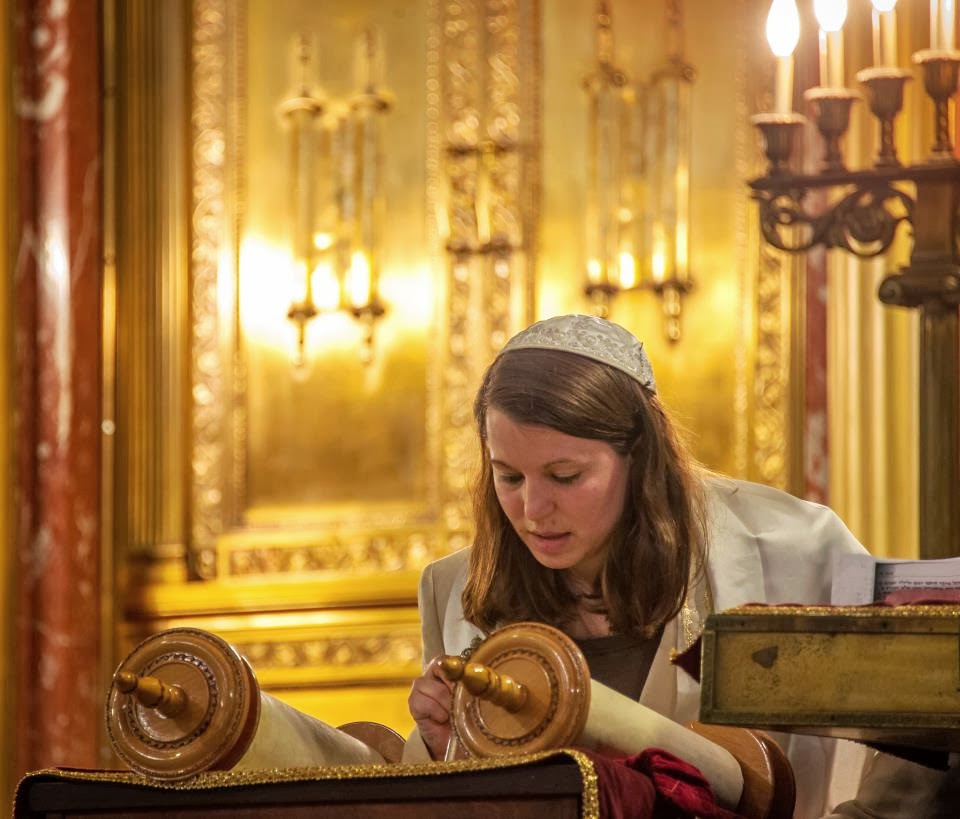Shabbat
Shalom! This week’s Torah portion is Parashat Tetzaveh. It is always read
within a week of Purim, and this year is no different, with Purim starting with
the conclusion of this Shabbat.
Tetzaveh
tells of the priests’ vestments. God tells Moses to tell his brother Aaron and
Aaron’s sons of how they will create their holy uniforms for the work of
serving in the Mishkan. Many of the colors and materials named are the same as
those named in the instructions given last week to build the Mishkan,
demonstrating the importance of these garments. One important distinction is that the priests’
clothing is explicitly meant to include both wool and linen, despite the fact
that the Israelites are later told not to mix wool and linen in their clothing.
This signifies the separation the priests may feel from the rest of their
kinsfolk. They not only had to dress in finery and with a specific uniform to
show their respect for God when entering the holy dwelling place of the divine,
that uniform followed completely different rules than those of the common
clothing.
The
story of Purim is set in Persia, presumably in the First Exile, when there is
no Temple or Mishkan or Priests standing. A Midrash from Esther Rabbah claims
that King Ahasuerus of Persia and his first wife Vashti wore the stolen
garments of the high priest, which had made their way to these Eastern lands
after the Babylonian destruction of the First Temple in Jerusalem. These fine
tunics and breastplates, created so lovingly for holy work, being worn by
heretics at their feasts and lecherous parties.
On the
other hand, when Esther approaches the King to make him aware of Haman’s evil
plot and her own Jewishness, she is wearing “Malkhut,” royalty. In the most
direct translation of the text, this is presumably royal clothing, that she is
dressed in her finery to remind Ahasuerus of how desirable she is so that he
will be inclined to do whatever it takes to keep her around. However, the
Zohar, a Kabbalistic work, brings this back to the idea of the holy vestments
of the priests. Wearing “malkhut” could mean royalty, but Malkhut is also one
of the Kabbalistic expressions of God. Esther is acting as High Priest, clothed
in the royal holiness, entering the inner chamber, and coming before the Most
High. She is speaking to King Ahasuerus, but she is also entreating God to save
the Jews. The Megillah tells us “She found favor in King Ahasuerus’s eyes,” and
the Zohar says, “The secret of these words is that God saw her and remembered
the eternal covenant. God heard her, and responded.”
There
are much more important things in life than fashion. Though it can be a
powerful tool for self-expression and various forms of wordless communication,
it is ultimately superficial, and no amount of fine clothing or accessories or
cute shoes or make up will make you a better or happier person. Those who know
me know that I particularly do not like to go clothes shopping and I am pretty
low maintenance in my look. Still, there are certain stylistic choices I make
to communicate who I am. I have many kippot and like to match them to my
outfits. I always wear a tallit when I lead Shabbat services or approach a
Torah. I like to wear make up on Shabbat, though I rarely wear it during the
week. Dressing for the role you serve and the headspace you want to be in can
be immensely helpful in getting you into that headspace and communicating that
role to others. And of course, no matter what else you wear when you go out
into the world, which is hopefully more than only your tiara, remember: you’re
never fully dressed without a smile. May you dress comfortably and well, may
you feel clothed in holiness and communicate your purpose clearly, and may you
always find yourself accessorized with a smile. Amen and Shabbat Shalom.

No comments:
Post a Comment